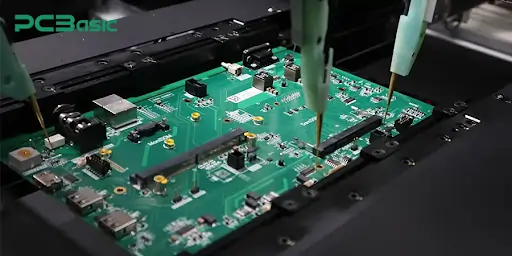Future Trends in Electric Vehicle Charging Infrastructure
Introduction
As electric vehicles (EVs) surge in popularity, how we power them is evolving rapidly. The future of EV charging lies in building smarter, faster, and more accessible networks catering to urban and rural drivers. From advancements in fast-charging stations to the seamless integration of green energy, the transformation in this sector is pivotal for wide-scale EV acceptance. Today, industry leaders are driving innovative EV charging solutions, shaping the future of transportation and sustainability.
Alongside innovation, the role of supportive policies and evolving consumer preferences cannot be understated. As governments and private stakeholders ramp up investments, charging infrastructure is set to become more robust, reliable, and eco-friendly. This article explores the technological and strategic trends redefining EV charging, focusing on breakthroughs that make electric transportation practical for all drivers.
Expansion of Charging Networks
The growing volume of EVs on the road demands the rapid expansion of charging networks nationwide. Both public and private sectors are ramping up investments to eliminate charging gaps, particularly in underserved and rural locations. For example, Tata Motors, India’s EV market leader, announced plans to more than double its charging points to 400,000 over the next two years, addressing concerns over range and inadequate charging infrastructure that have hindered EV sales. This widespread installation alleviates range anxiety, encouraging more consumers to switch to electric vehicles.
Advancements in Fast-Charging Technologies
Speed remains a top concern for EV users, and recent breakthroughs in fast-charging are addressing these issues head-on. The deployment of Direct Current Fast Charging (DCFC) stations significantly cuts down charging time, making long-distance trips viable and reducing user downtime. Charging solutions are getting faster and wiser today, offering real-time availability and dynamic pricing features. Public fast-charging stations are proliferating along highways and urban centers, making the EV experience more aligned with the conventional refueling process.
Integration of Renewable Energy Sources
The synergy between EV charging and renewable energy sources stands out as the world confronts climate change. Solar-powered charging stations, both standalone and part of extensive parking facilities, are becoming common. Such integration reduces the carbon footprint and allows utilities to manage peak loads more efficiently by storing solar energy during the day and distributing it when demand spikes. This approach enhances sustainability and reduces long-term operating costs for network operators and users alike.
Standardization and Interoperability
As electric vehicles (EVs) continue to gain popularity, the expanding range of models and charging equipment underscores the importance of standardization across the industry. With different connectors and protocols creating confusion and limiting access, achieving interoperability is now a top priority for automakers, infrastructure providers, and regulators. The North American Charging Standard (NACS), recently formalized as SAE J3400, represents a significant step toward unifying the EV charging landscape. Supported by major car manufacturers and government initiatives, this standard promotes a seamless charging experience by ensuring that all EVs can connect to a growing number of stations regardless of brand. Ultimately, this shift boosts consumer confidence, reduces infrastructure redundancy, and accelerates the transition to a fully electrified transportation ecosystem.
Emerging Technologies in EV Charging
Wireless charging and Vehicle-to-Grid (V2G) technologies are reshaping the future of electric vehicle (EV) infrastructure by introducing greater convenience and sustainability. Wireless charging uses electromagnetic fields through inductive pads embedded in parking spaces or roadways, eliminating the need for plugs and enabling automatic, hands-free charging. This is especially useful in urban and fleet operations where ease and efficiency are critical. On the other hand, V2G technology allows EVs to draw energy from and send excess power back to the grid. This two-way energy flow turns vehicles into mobile energy storage units, helping stabilize the grid during high-demand periods. Together, these innovations pave the way for more innovative, flexible, and eco-friendly transportation ecosystems.
Policy and Incentives
Legislation and incentives are critical levers in developing and adopting EV charging infrastructure. In the U.S., the Infrastructure Investment and Jobs Act allocated billions for charging infrastructure, prioritizing rural and economically disadvantaged communities to ensure equitable access. Financial incentives, rebates, and streamlined permitting further accelerate deployments and reduce costs for both providers and consumers. These supportive frameworks help bridge the gap between innovation and wide-scale implementation.
Consumer Behavior and Adoption
Understanding user preferences is key to the effective rollout of charging infrastructure. Surveys reveal that while public charging networks are essential, the majority of charging happens at home. Investments in domestic charging technology—such as smart home chargers and energy management tools—provide added convenience and help relieve pressure on public stations during periods of peak demand. Education and ease of access will drive future adoption, especially as more mainstream consumers embrace electric vehicles.
Future Outlook
The evolution of EV charging infrastructure is gaining momentum as demand for electric vehicles continues to rise. Driven by rapid technological innovation, improvements in charging speed, user-friendly interfaces, and real-time data tracking are transforming the driver experience. Integration with renewable energy sources like solar and wind further enhances sustainability, reducing the carbon footprint of transportation. Collaboration between government agencies, utility providers, and private investors is vital in expanding accessible and reliable charging networks nationwide. These efforts also promote energy resilience and support climate goals. As stakeholders adopt future-ready EV charging solutions, the infrastructure will meet today’s needs and adapt to tomorrow’s challenges, creating smarter, greener communities while fueling economic growth and environmental responsibility.
Read more: Google Calendar API Integration: Developer Guide to Seamless Scheduling – Names Spark
Small Changes, Big Impact: Practical Ways to Regain Financial Control






